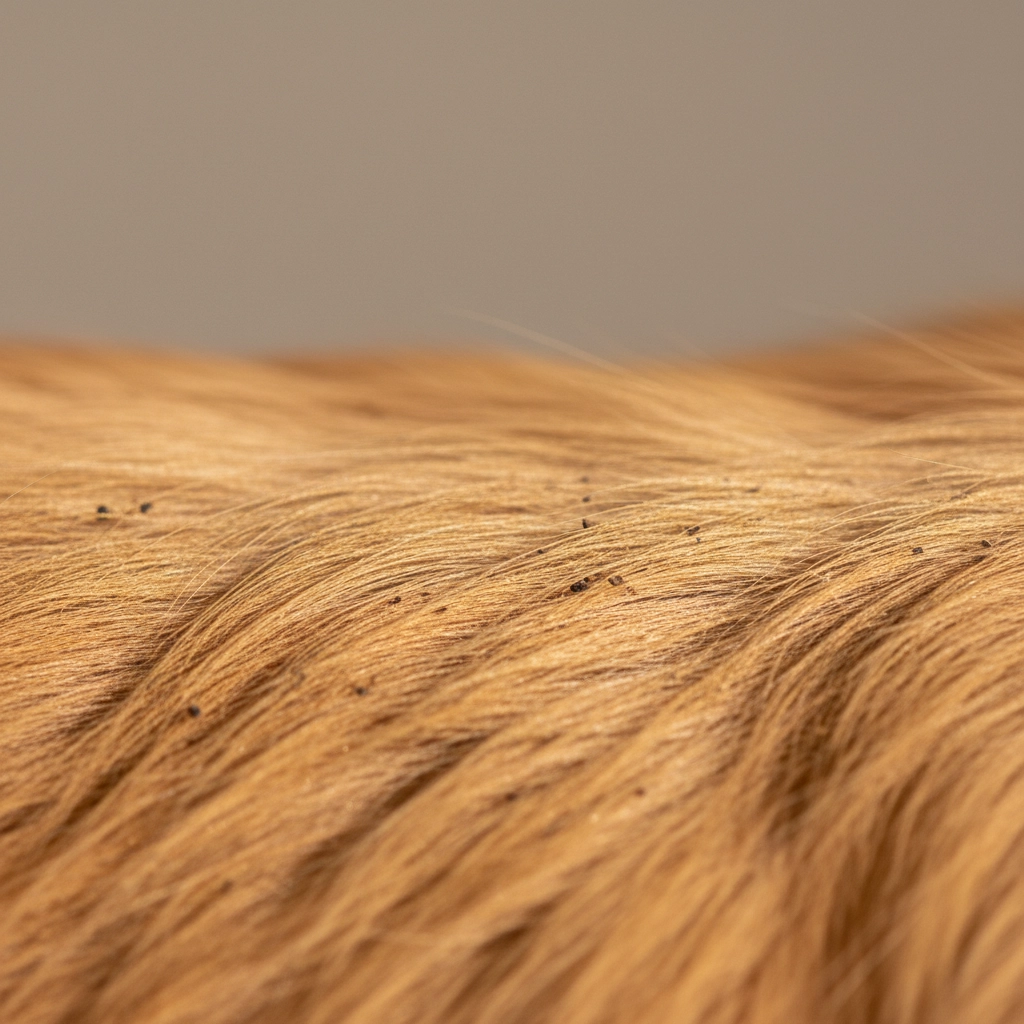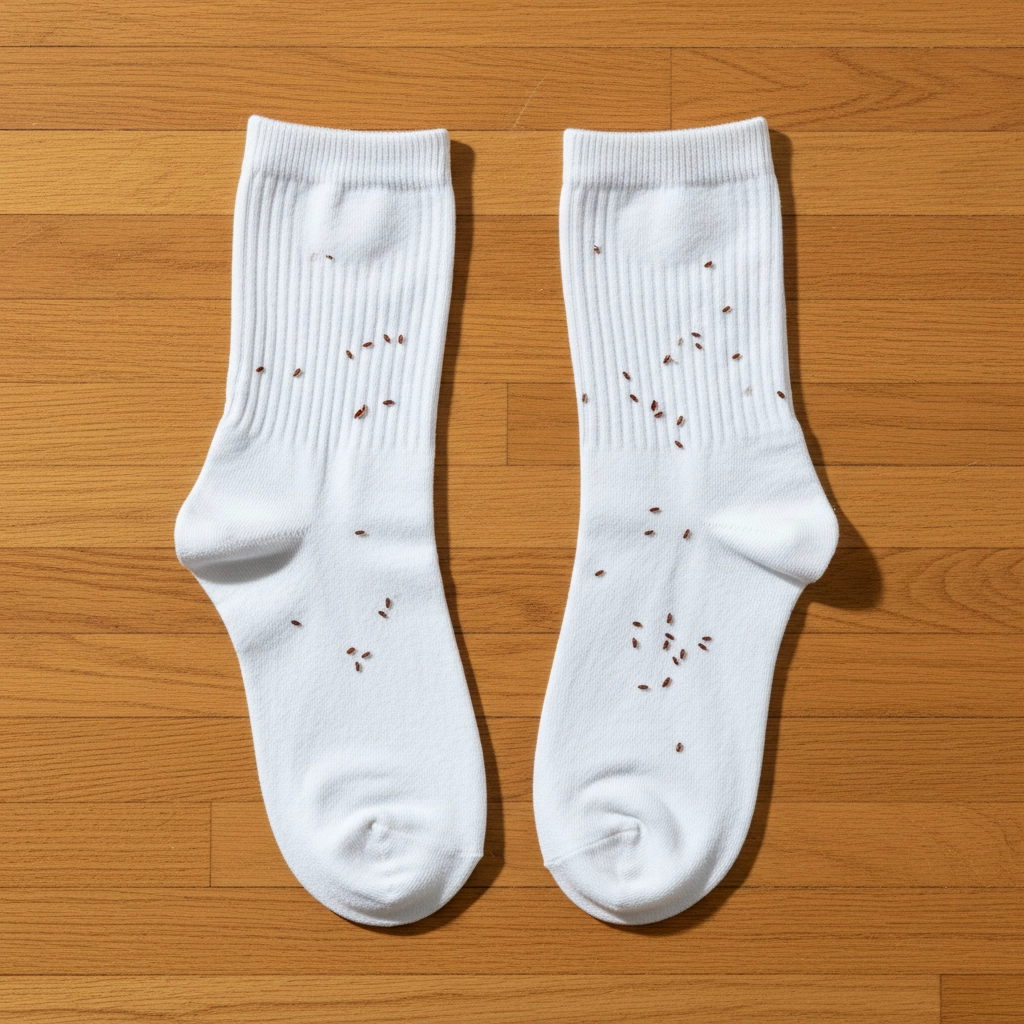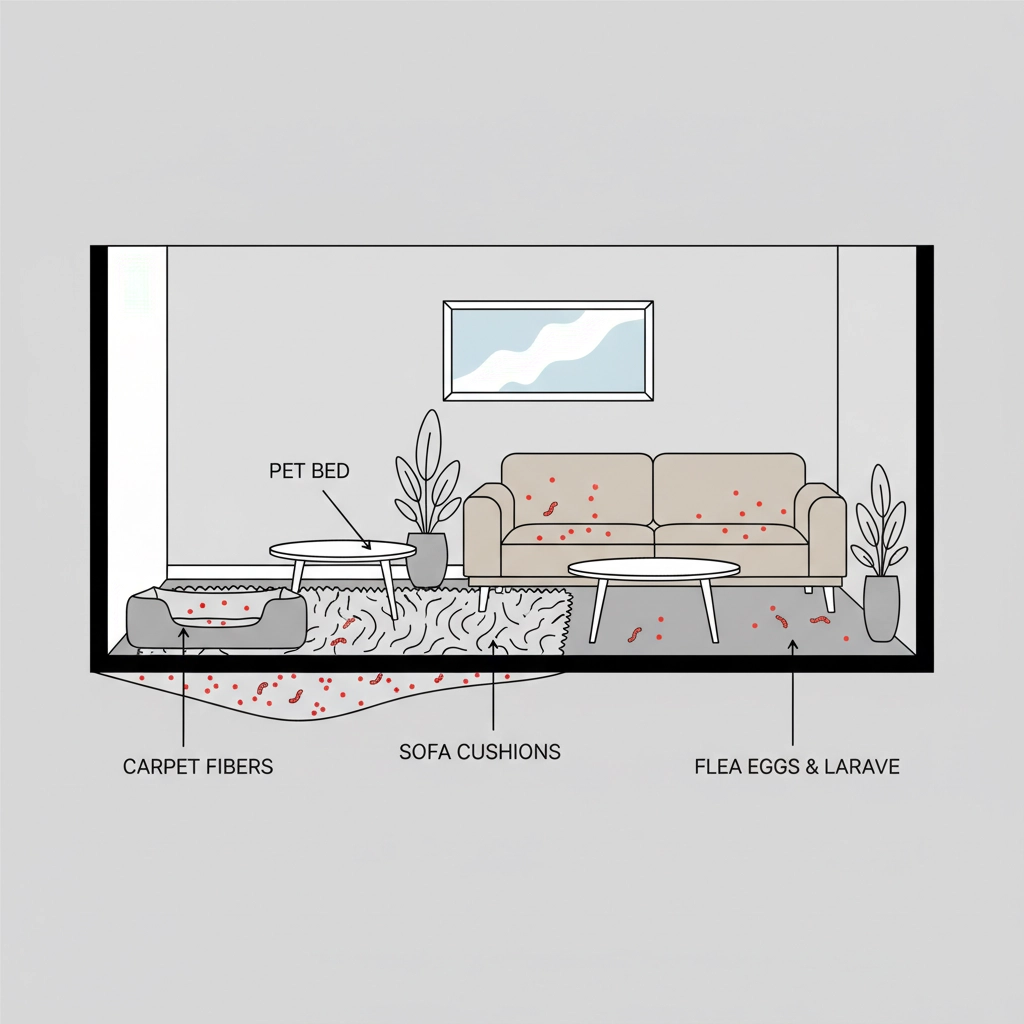Are Fleas Bugging You? How to Spot, Prevent, and Deal with Fleas in Your Home or Cottage
- Targeted Wildlife and Pest Solutions

- Sep 26
- 6 min read
Fleas are one of those pests that can turn your comfortable Haliburton County home or cottage into an itchy nightmare faster than you might expect. These tiny, persistent parasites don't just target your pets: they'll happily make a meal out of you and your family too. Whether you're dealing with a year-round residence or a seasonal cottage, understanding how to identify, prevent, and eliminate fleas is essential for maintaining a comfortable living space.
The good news? With the right knowledge and approach, you can stay ahead of these unwanted guests and keep your property flea-free.
Recognizing the Signs of a Flea Problem
Your Pets Are Telling You Something
Your furry companions are often the first to alert you to a flea invasion. Watch for excessive scratching, especially around the neck, head, and base of the tail. If your normally calm pet suddenly can't stop itching, fleas might be the culprit.
Pay close attention to your pet's gums as well. Healthy gums should be pink, but if they appear pale or white, this could indicate anemia from a severe flea infestation: a serious condition requiring immediate veterinary attention.
Hair loss and bald patches from constant scratching are another red flag. You might also notice your pet seems more restless than usual or spends excessive time grooming specific areas.

Physical Evidence Around Your Home
Fleas leave behind telltale signs that are relatively easy to spot once you know what to look for. "Flea dirt": which is actually flea feces: appears as small, dark specks resembling black pepper on your pet's fur, bedding, and furniture. If you're unsure whether those specks are dirt or flea waste, place them on a damp paper towel. Flea dirt will turn reddish-brown as it dissolves, revealing digested blood.
You might also discover tiny white or clear oval-shaped flea eggs in carpet fibers, pet bedding, cracks between floorboards, and underneath furniture. These eggs are about the size of a grain of salt and can be easily missed without close inspection.
Human Symptoms
Fleas don't discriminate between pets and people. If you're experiencing small, red, intensely itchy bites around your ankles and lower legs, fleas could be to blame. Unlike mosquito bites that appear randomly, flea bites often form clusters or lines.
These bites typically have a single puncture point in the center and can remain itchy for several days. Some people develop allergic reactions that cause the bites to swell significantly or form welts.
Health Risks and Hazards
Fleas aren't just a nuisance: they pose real health risks to both pets and humans. For pets, severe infestations can lead to:
Flea allergy dermatitis: A skin condition causing intense itching and inflammation
Anemia: Particularly dangerous for puppies, kittens, elderly pets, or those with compromised immune systems
Secondary bacterial infections: From constant scratching and open wounds
Humans face their own set of risks, including:
Allergic reactions: Some people develop severe sensitivities to flea bites
Disease transmission: While rare in Canada, fleas can potentially transmit diseases like murine typhus
Secondary infections: Scratching bites can lead to bacterial skin infections
Simple Inspection Techniques
The White Sock Test
This tried-and-true method is remarkably effective. Put on a pair of white socks pulled up to your calves and walk slowly through your home, shuffling your feet to create movement and warmth. Fleas are attracted to heat and vibrations, so they'll jump onto the socks where they're easily visible against the white fabric.
Focus on areas where your pets spend time: near their beds, favorite lounging spots, and high-traffic zones. You can also leave white socks overnight in suspect areas and check them in the morning.
Water Bowl Trap
Set up a shallow bowl filled with warm, soapy water and position a lamp above it. The light attracts fleas, which jump toward it and land in the water. The soap breaks the surface tension, preventing them from escaping. This method serves double duty as both detection and elimination tool.

Carpet and Furniture Inspection
Run your hands through carpet fibers and upholstery, particularly in areas where pets rest. Look for flea dirt, eggs, and any signs of movement. A fine-tooth comb can help separate fibers for better visibility.
Prevention Strategies That Work
Pet-Focused Prevention
The most effective flea prevention starts with your pets. Keep them on year-round flea preventatives recommended by your veterinarian. These products are far more effective than over-the-counter options and provide consistent protection.
Regular grooming with a flea comb helps catch problems early. Pay special attention to areas where fleas love to hide: the base of the tail, behind ears, and under the chin.
Environmental Management
Maintain a regular cleaning schedule that includes:
Weekly vacuuming: Focus on carpets, rugs, upholstery, and pet bedding
Hot water washing: Wash pet bedding, blankets, and any fabric items in water above 140°F
Yard maintenance: Keep grass trimmed short and remove debris where fleas might develop
For cottage owners, pay extra attention after periods of vacancy. Fleas can survive for months without a host, so properties left empty can harbor dormant populations ready to emerge when you return.
Seasonal Considerations
In Haliburton County, flea activity typically peaks during warmer months but can persist indoors year-round. During spring opening of cottages, inspect thoroughly before bringing pets inside. Fall closing should include a comprehensive cleaning to eliminate any flea eggs or larvae that might overwinter indoors.
Treatment Options When Prevention Fails
Immediate Pet Treatment
If you discover an active infestation, act quickly. Fast-acting products like Capstar tablets kill adult fleas within hours, providing immediate relief for your pet. Follow up with long-term preventatives to break the reproduction cycle.
Flea shampoos and sprays can provide temporary relief, but they won't address eggs and larvae already in your environment. Always consult your veterinarian before using multiple flea products simultaneously to avoid potential toxicity.
Home Treatment Approach
Successful flea elimination requires a comprehensive approach targeting all life stages:
Daily vacuuming: This physically removes eggs, larvae, and adults while stimulating dormant pupae to emerge
Carpet treatments: Use premise sprays or powders designed specifically for fleas, following label directions carefully
Hot water washing: Launder all washable fabrics in the hottest water safe for the material
Steam cleaning: Professional carpet cleaning with steam can eliminate fleas at all life stages

Dispose of vacuum bags immediately after use, or empty bagless containers into outdoor trash. The vibration and warmth from vacuuming can actually cause more fleas to emerge, so don't be discouraged if you see increased activity initially.
Outdoor Treatment
Don't forget your yard, especially areas where pets spend time. Beneficial nematodes: microscopic worms that eat flea larvae: provide natural, pet-safe outdoor control. Apply them during cool, moist conditions for best results.
Remove debris like fallen leaves and grass clippings where fleas might develop. Consider installing cedar chips in areas where pets rest, as cedar naturally repels fleas.
When to Call the Professionals
Some situations warrant professional intervention:
Severe infestations that persist despite consistent treatment efforts
Multiple properties requiring simultaneous treatment
Health concerns for family members or pets with compromised immune systems
Time constraints when you need rapid, comprehensive elimination
Professional pest control services have access to more effective products and can develop targeted treatment plans for your specific situation. They can also identify and address factors contributing to reinfestation.
At Targeted Wildlife and Pest Solutions, we understand the unique challenges faced by property owners in Haliburton County. Our experienced team can assess your situation, develop an effective treatment strategy, and provide ongoing support to keep your home or cottage comfortable year-round.
Breaking the Cycle for Good
Remember that successful flea elimination takes patience and persistence. The flea life cycle can extend several weeks, and you'll need to maintain treatment efforts until you've eliminated all stages: eggs, larvae, pupae, and adults.
Consistency is key. Skipping treatments or failing to address all areas allows populations to rebuild quickly. With the right approach and persistence, you can reclaim your home from these persistent pests and enjoy comfortable, bite-free living in your Haliburton County property.
Don't let fleas take over your home or cottage. Take action at the first sign of infestation, and don't hesitate to reach out for professional help when needed. Your family and pets deserve a comfortable, pest-free environment.
Comments